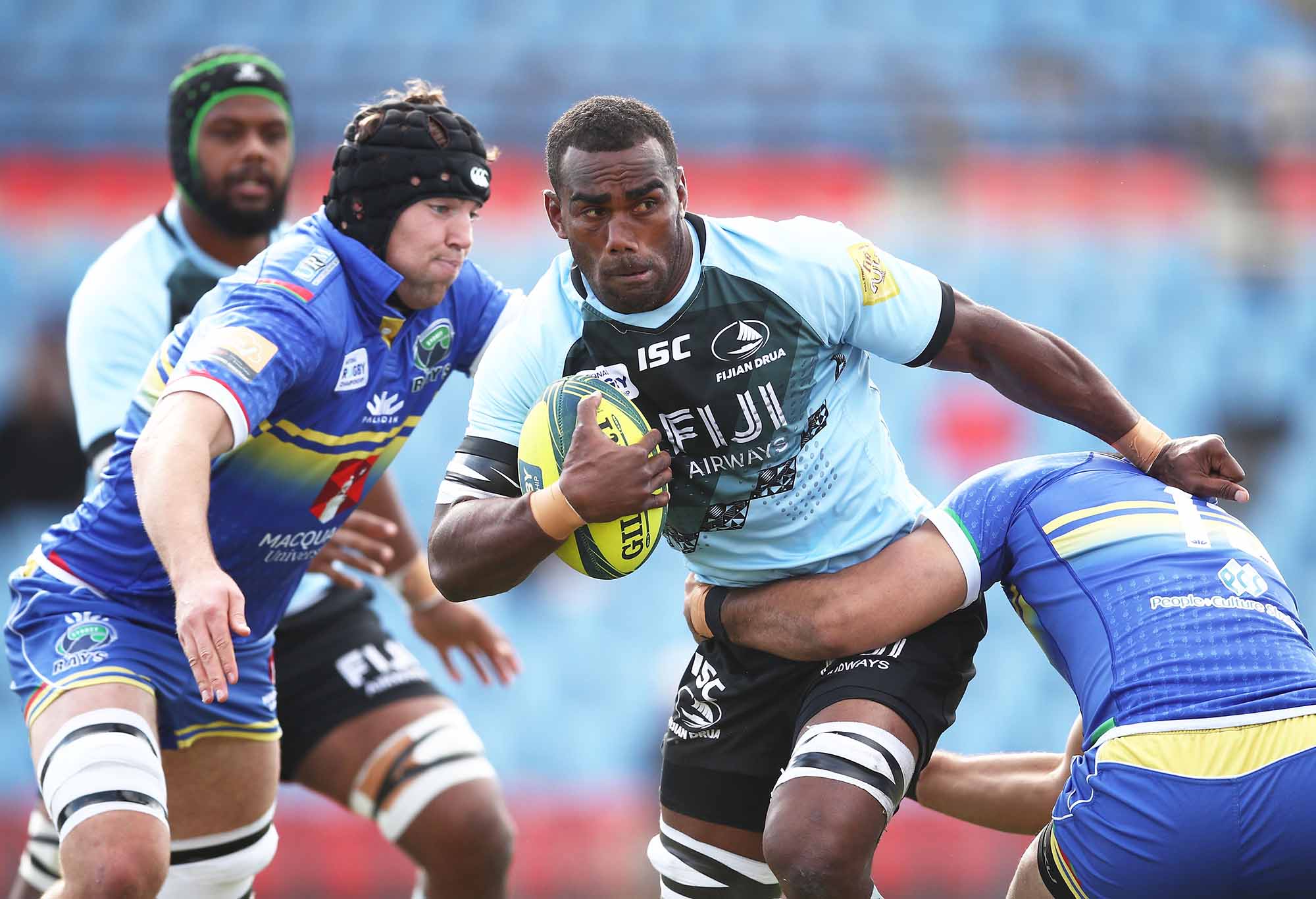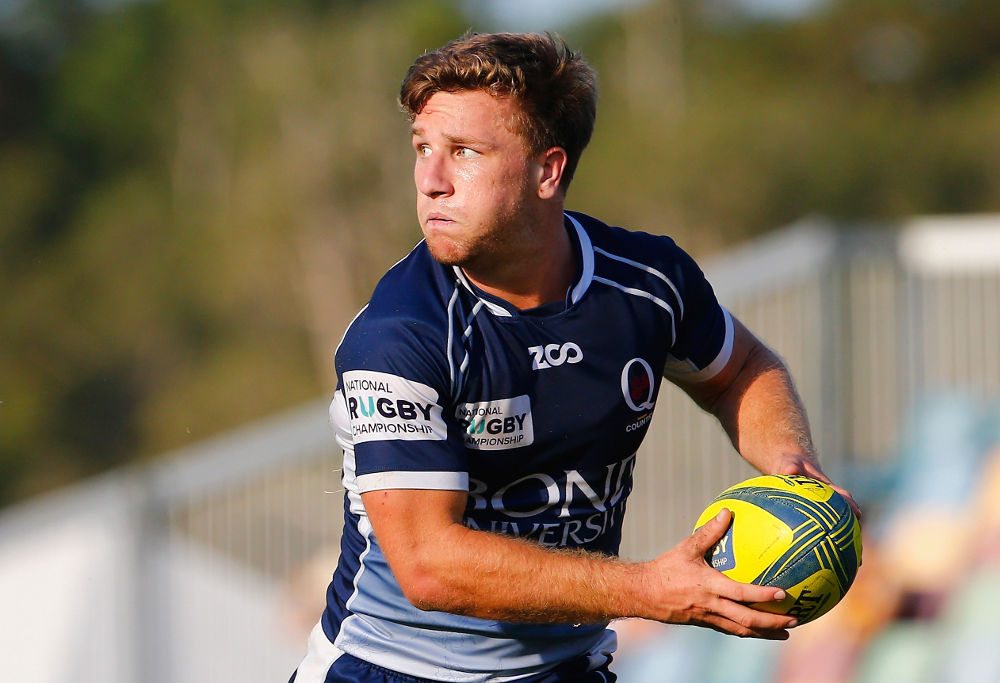An interesting narrative emerged through the commentary across both National Rugby Championship semi-finals on the weekend, even if the conversation would have been more appropriate in better weather conditions.
As the expert commentator in both semi-finals for Fox Sports, former Waratahs, Brumbies, and Wallabies backrower Stephen Hoiles, was rightly pointing out that just as Fijian Rugby benefits from playing in the NRC, Australian teams, coaches and players can also learn from the Fijians. Particularly, he suggested, the way they instinctively look to transition from defence into attack.
The only curious part of the conversation was that both games over the weekend were at times played in absolutely torrential rain.
Going into last weekend, I pulled a few numbers out across attack and defence to try and illustrate any great differences between the four semi-finalists.
Unsurprisingly, the great difference was in attack, where before the semis were played, the Fijian Drua led the metres made and carries – and by a long way. While the Western Force ranked fourth among the NRC teams, Queensland Country and Canberra came in seventh and eighth.
In terms of what they did with those carries, the Drua made at least twice as many clean breaks as any other side, beat more defenders, and offloaded the most, too.

Mosese Voka of the Fijian Drua (Photo by Matt King/Getty Images)
The Force, Country and Canberra all ranked in the bottom five for clean breaks. Each had less than half as many as Fiji. Country and the Force ranked top four for defenders beaten, but the Vikings were again eighth. Country finished with less than half the number of offloads as Fiji, while Canberra and the Force came in seventh and eighth, and both coming in at plus-or-minus a quarter of the number of offloads of the Fijians.
So there was a clear difference in the way the Australian sides played, compared to the Drua, and that is very obvious when watching them play.
Here’s another measure I didn’t produce last week, and this figure now includes the semi-finals: the Drua’s carry-to-offload measure (C/OL) is 11 per cent. That is, for every 100 carries, the Drua get an offload away eleven times. The Western Force’s was well down at just 4 per cent, Canberra’s was marginally better at 6 per cent, while Queensland Country’s CB/OL comes in at 10 per cent.
With players like Jordan Petaia, Filipo Daugunu and Jock Campbell, this isn’t surprising; those three would be right up there with the best of Drua in terms of players getting themselves into position to support a ball-carrier.
This is interesting, because while the general attack stats show the Fijians to be miles in front of the best Australian sides, that carries-to-offloads measure shows that Queensland Country at least have a similarly healthy second-phase mentality about their play as do the Drua.
So while I absolutely agree that Australian sides can learn from the Fijians in terms of the way they carry, and particularly the way they present themselves in attack to support the ball carrier, this shows something of a green shoot from Queensland Country. They probably know that they’re not going to make clean breaks for fun like the Drua have done throughout the NRC, but they do at least look to produce something from any clean breaks they do make.

James Tuttle of Queensland Country. (Photo by Jason O’Brien/Getty Images)
Just to underline this, Country have scored the most tries in 2018, with the Drua the next best.
So how did this look during Super Rugby?
Well, it’s interesting. The Waratahs ranked in the top five for carries and offloads, but their C/OL measure comes in at 7.9 per cent. The other three Australian sides all ranked in the bottom half for both measures, but compare similarly.
The Rebels offloaded from 7.2 per cent of their carries, while the Brumbies came in 8.0 per cent – a figure undoubtedly improved by their new attacking philosophy clicking into gear properly while on tour in South Africa, and carrying on for the last six weeks of the competition.
The Reds, with many of the same players as Queensland Country, offloaded from just 6.8 per cent of all carries. I wonder if that’s a factor in why Jim Mackay was brought in as attack coach for 2019?
As a guide, the average of the five New Zealand sides comes in below only the Waratahs in terms of carries, and perhaps unsurprisingly, higher than all Australian sides in terms of offloads. And their C/OL measure is 8.7 per cent.
So what about the Wallabies, then?
Well, it’s not a great picture, but perhaps not as bad as you might think when compared to the other three nations in The Rugby Championship
New Zealand carry and offload more, but their C/OL comes in at 7.0 per cent. Argentina come in with the lowest C/OL of 6.3 per cent – think about how they’ve been able to transition so well from defence to attack this year.
Perhaps Nico Sanchez kicks more than we realise? South Africa do kick a lot, and have carried 200+ fewer times than the All Blacks; yet their C/OL equates to 7.9 per cent.

Sanchez makes the Pumas tick. (AFP PHOTO / MARTY MELVILLE)
Australia sits mid-table in both measures; not the best, and not the worst for either carries or offloads. But their C/OL is only marginally better than Los Pumas, at 6.4 per cent. And now you’re thinking off all those pushed passes and all that dropped ball on tour.
So there’s no doubt plenty to be learnt not just from the Fijians in the NRC, but the Kiwis in Super Rugby, and just about everyone in Test rugby.
But this is hardly new, is it? I don’t know how these 2018 numbers would compare to last year, or even five years ago, but my gut feel is that everyone is offloading more now. And that could just as easily be put down to the evolution of the game. Second-phase play is the new hold-for-15-phases-and-you’ll-probably-score.
Here’s something I prepared a little earlier:
One common element in the five Australian [Super Rugby] losses, was a chronic lack of second-phase play. Offloads were occasional events, rather than distinct plans, as the Australian players across the weekend hit the ball up directly into defensive walls with no real intent to look sideways.
If that sounds familiar, it’s because it is. I’ve essentially summarised the Wallabies’ game plan for the first and third Tests against England. Despite enjoying upwards of 70% of possession at times in both Tests, the Wallabies continued their ultimately futile attempts at blasting their way through the England defence.
In both matches, the Wallabies carried the ball more than 130 times, yet could manage only 13 offloads in the first Test, and just eight offloads in the third. Less than once in every ten carries did they get an offload away, meaning that more often than not they weren’t even attempting to promote the ball.
These pars come from a column back in July 2016, after all five Australian Super Rugby sides had lost on the same weekend for the first time, and coming only a few weeks after England won the Cook Cup series in a 3-0 clean sweep.
In it, I had illustrated a chronic lack of offloads from the Australian sides on that particular weekend.
Worryingly, the C/OL numbers I’ve referenced here today aren’t that much different to what they were two years ago. If my perception is true, that rugby is evolving with an increased focus on second-phase play, then these numbers show that Australia isn’t just not keeping up with the rest of the world, but that we’re stagnant, which in actual fact means we’re going backwards.
It’s not going to happen overnight, but Australian rugby needs to develop the second-phase element of their game. Ironically enough, it probably means losing the structured coaching manual, and allowing the kids coming through the systems to use the instincts and natural talents we’ve been coaching out of them since the dawn of professionalism, probably, to become better players at whatever level they’re playing.
That’s a job for the national skill coach, it’s a job for the head of national coaching development, and it’s a job for coaches at all levels: the Wallabies, Super Rugby, NRC, club rugby, schools rugby, all the age representative teams, and all the way down the line.
So while it is absolutely true that NRC teams can and should watch and learn from the Fijian Drua, it is good to see one Australian side actually already matches them quite well in this one aspect. And even more crucially, Queensland Country have shown this season that developing and fostering second-phase play can be done with the same playing personnel.
It’s time the rest of Australian rugby caught up, too.































































































